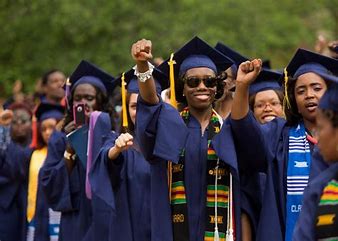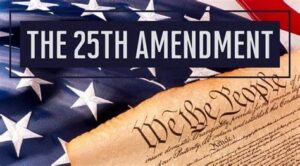Published in BlackCommentator.com, October 13, 2022
 My niece’s college choice was heavily influenced by watching The Bill Cosby Show during the 1990’s. She chose Temple University despite my pleadings to go to a college in her home state. Her drama major was based upon a dream to become an actress. I eventually persuaded her to become a public-school teacher. I think you know where I’m going with this scenario and its relationship to college debt.
My niece’s college choice was heavily influenced by watching The Bill Cosby Show during the 1990’s. She chose Temple University despite my pleadings to go to a college in her home state. Her drama major was based upon a dream to become an actress. I eventually persuaded her to become a public-school teacher. I think you know where I’m going with this scenario and its relationship to college debt.
My niece had a great college experience, but it was a costly one. Taking out loans and facing the low teaching salaries in the South, it took a couple of decades for the single mom to pay off her loans. Forty-four million former students have their own debt story.
The U.S. student debt is a whopping $1.7 trillion, surpassing auto loans and credit card debt. It is an astounding amount that is greater than the gross domestic product (GDP) of almost every country on the planet. It should come as no surprise the impact this level of debt is having on the economy.
Like other lifestyle indicators, the burden of student loan debt on African Americans is heavier and disproportionate to other racial groups. The average Black student owes nearly twice as much debt as their white counterpart. Black students owe more than Asian and Latinos.
The escalating costs of college tuition have affected all students but like COVID-19, we’re not all in the same boat. Black students, who aren’t eligible for athletic or other specialized scholarships end up borrowing more. According to the Federal Reserve, they will earn less – regardless of the career – and thereby are less likely to pay off their debts and more likely to get behind on their loan payments.
The Black student crisis didn’t start when my niece and millions like her made their decisions to borrow money to go to college, hoping their sacrifice meant a better future. It is embedded in racist policies over centuries that made building wealth nearly impossible, especially intergenerational wealth. From forced free slave labor to minimal access to bank loans for home or business ownership to persistent wage discrimination, these have been enduring contributors to the ever-widening racial wealth gap.
President Joe Biden made a campaign promise to address the thorny student loan issue. Recently, his roar became a whimper as he cow-towed to threats from conservative legislators and the financial sector who hold the keys to private student loans.
Six Republican attorneys general claimed that canceling the student loan debt was unconstitutional. The nearly one million debtors who expected loan forgiveness were told if the Education Department didn’t hold their loans, they were ineligible for the consolidation leading to debt relief. Borrowers with Perkins loans and Federal Family Education Loans (FFEL) no longer qualify for the forgiveness program. Private banks put a halt to any bites out of their profits.
Given the historical racism that has prevented the full potential of Black folks for earnings and for ownership that provide the basis for any family wealth, the call for reparations should’ve been invoked. The current financial slate for Black students’ debt loans could have been wiped clean to address this small portion of the racist disparity in higher education. That would have been a step in the right direction for rectifying centuries of wrongs for a country who claims to revere education.



